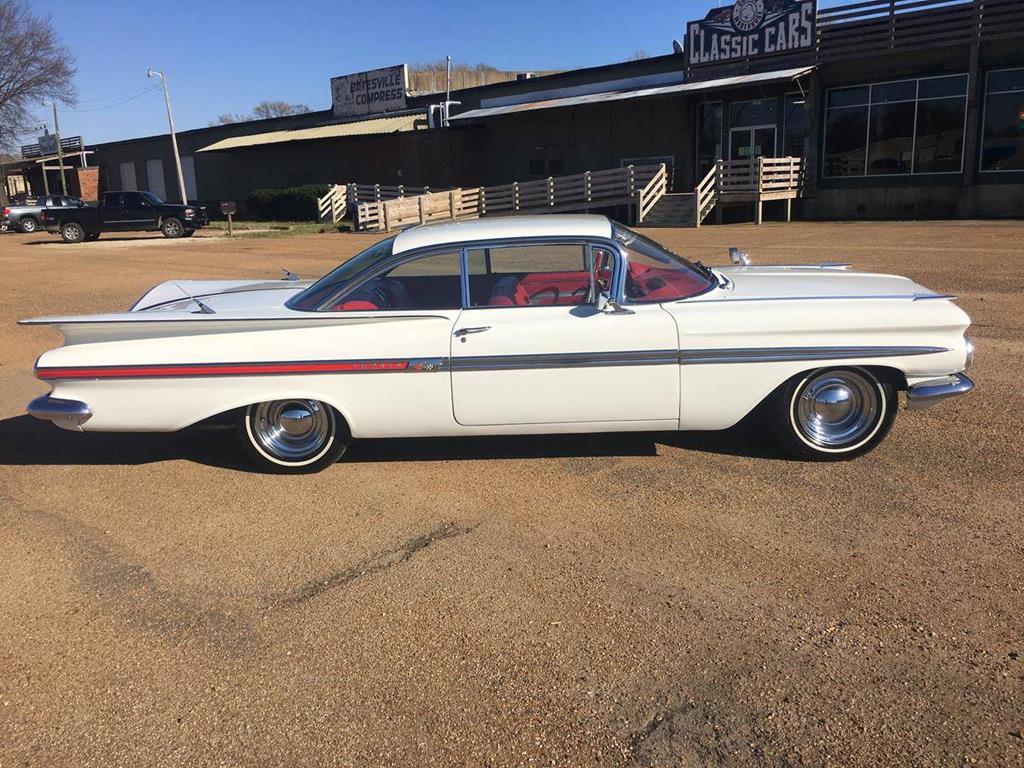
The 1959 Chevrolet Impala was redesigned. Sharing bodyshells with lower-end Buicks and Oldsmobiles as well as with Pontiac, part of a GM economy move, the Chevrolet's wheelbase was 1-1/2 inches longer. Using a new X-frame chassis, the roof line was three inches lower, bodies were two inches wider, and curb weight increased. Its tailfins protruded outward, rather than upward. The taillights were a large "teardrop" design at each side, and two slim-wide nonfunctional front air intake scoops were added just above the grille.

The Impala became a separate series, adding a four-door hardtop and four-door sedan, to the two-door Sport Coupe and convertible. Sport Coupes featured a shortened roof line and wrap-over back window. The standard engine was an I6, while the base V8 was the carryover 283 cu in (4.6 L), at 185 hp (138 kW). Optional were a 283 cu in with 290 hp (220 kW) and 348 cu in (5.7 L) V8 up to 335 hp (250 kW). Standard were front and rear armrests, an electric clock, dual sliding sun visors, and crank-operated front vent windows. A contoured hooded instrument panel held deep-set gauges. A six-way power seat was a new option, as was "Speedminder", for the driver to set a needle at a specific speed and a buzzer would sound if the pre-set was exceeded.

The 1960 Impala models reinstated three round taillights on each side, and a white band running along the rear fenders.
The available V8s were reduced to seven, in 283-cu in or 348-cu in displacements. The carbureted Turbo-Fire 283 cu in V8 could have either 170 or 230 hp (130 or 170 kW). The 348 cu in was available in 250 to 320 hp (190 to 240 kW) with a 350 hp (260 kW) Special Super Turbo-Thrust with triple two-barrel carburetors, 11.25:1 compression ratio, and dual exhausts. Fuel injection was no longer an option on full-size Chevrolets. New to the options list was speed and cruise control.

Production was 490,000 units.
Right-hand drive cars were made in Oshawa, Ontario, Canada, for New Zealand, Australia, and South Africa and assembled locally from CKD or SKD kits. The right-hand drive dashboard was a mirror image of the 1959 Chevrolet panel and shared with equivalent right-hand drive Pontiac models. Australian models were assembled by hand on the GMH Holden assembly lines.












































 LINKS E SITES IMPORTANTES
LINKS E SITES IMPORTANTES


